Honeyberry (honeyberry bush), also called 'Mayberry' or 'blue honeysuckle', is a bush highly prized for its small ovate edible berries. Easy to grow, they naturally find their place in a hedge of fruit bushes. These delicious fleshy blue berries have bright red flesh and are enjoyed fresh, in tarts, in compote or in jelly and jam. Their taste is slightly tangy and sweet, reminiscent of blueberries, with a hint of kiwi aroma. Discover with us when, how to harvest and preserve honeyberries.
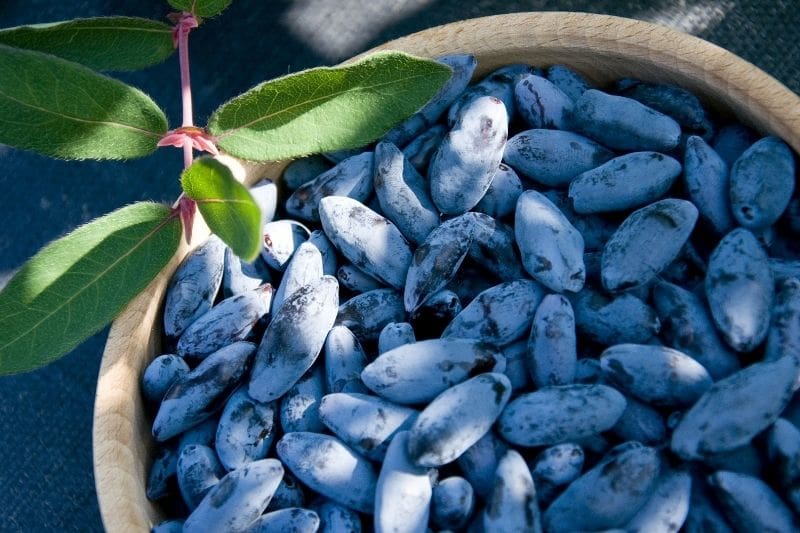
Honeyberries of Lonicera kamtschatica
Which edible honeysuckle varieties are there?
Edible honeysuckle, Latin Lonicera caerulea kamtschatica (or simply Lonicera kamtschatica), is the well-known fruiting bush that produces small honeyberries in our latitudes. It is also known as 'blue haskap' or 'honeyberries'. It belongs to family Caprifoliaceae, like other honeysuckles. Be careful not to eat fruits of ornamental honeysuckles, which are toxic.
Several varieties of Lonicera kamtschatica are particularly interesting for their compact habit and are grown for their sweet berries, such as varieties ‘Duet’, 'Eisbär’, 'Sweet Myberry' or 'Kalimka'.
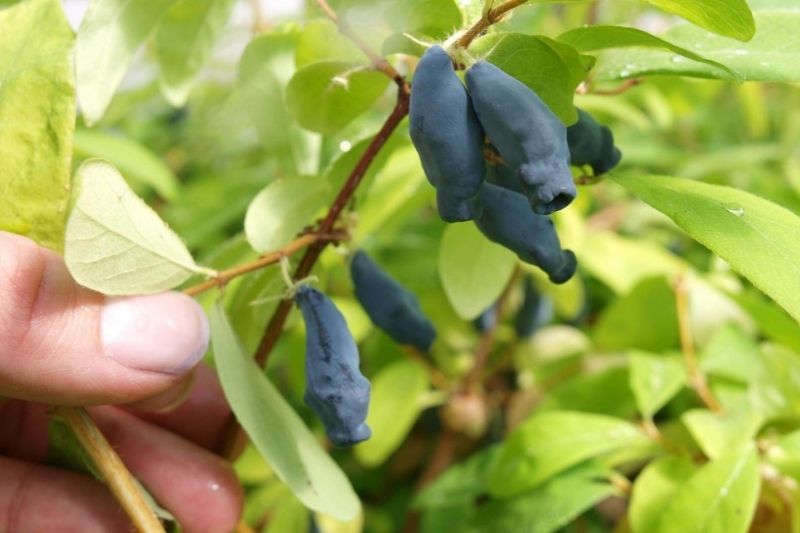
Berries of Lonicera kamtschatica 'Eisbär'
When to harvest honeyberries?
As its name suggests, harvest of honeyberries takes place in spring, between May and June depending on region. It is one of first small fruits of spring. Berries should be picked when ripe. Skin must be blue and flesh deep red. If flesh is still green, wait a little longer before harvesting.
Note:
- Depending on variety, a honeyberry bush yields about 1 to 3 kg fruit per bush.
- Generally wait 3 to 5 years after planting to obtain good fruiting.
- For abundant production, recommended to plant at least 2 Lonicera kamtschatica plants.
How to harvest honeyberries?
Harvesting these small fruits is very easy and is done simply by hand. Edible honeysuckles are small bushes, measuring between 1 m and 1.80 m in height, which makes harvest easier.
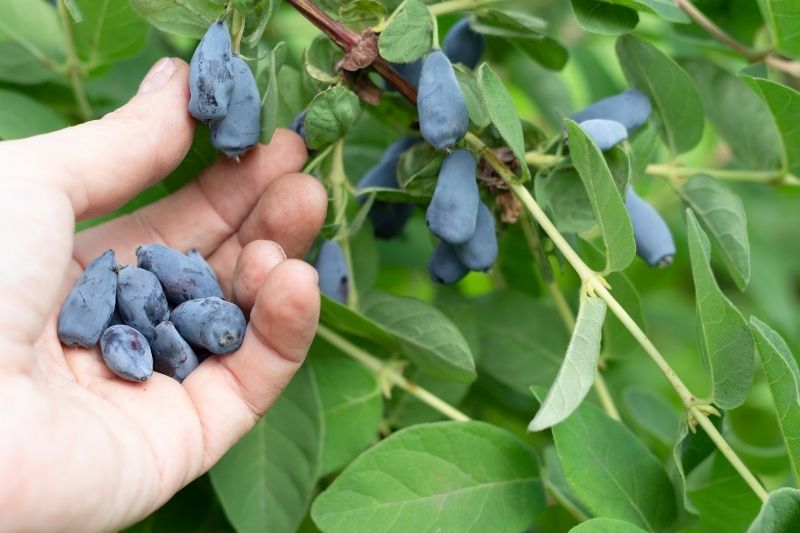
Honeyberries are simply harvested by hand
How to store honeyberries?
Once picked, honeyberries keep for only 2 to 3 days in fridge, preferably in vegetable drawer. They are enjoyed fresh, in desserts, in tarts with other red fruits such as strawberries, raspberries, redcurrants, blackcurrants and cherries. These small fruits are also perfect for making jam, in jelly, in sorbets, in syrup, coulis or in juice. Enough to delight taste buds of young and old gardeners.
They can easily be frozen or dried to enjoy over the months or in infusions.
Note that even when ripe, fruits can remain on bush for several weeks. So they can be picked as needed. Nothing stops you from snacking on them while passing through garden.
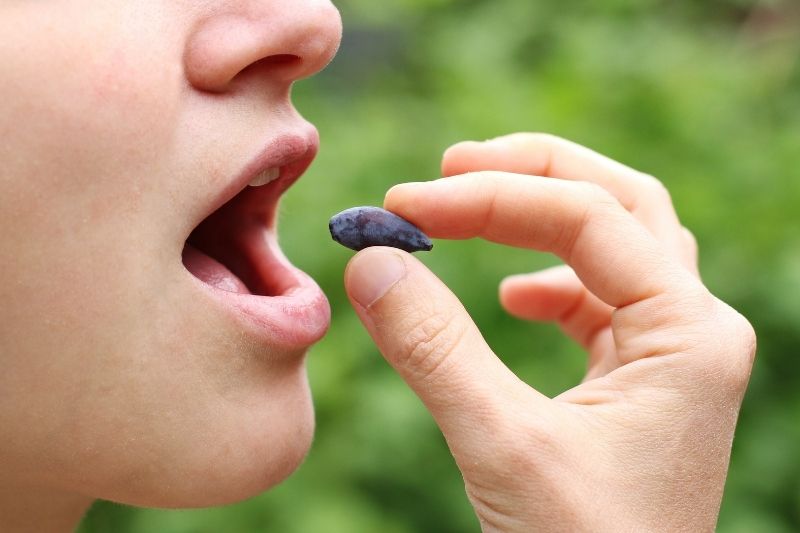
Honeyberries are also enjoyed during visits to the garden
How to dry honeyberries
As with goji berries, there are two techniques for drying the small fruits: first oven drying and second using a dehydrator. Note that second gives better results without need to watch cooking frequently.
1st technique: oven drying
- Rinse honeyberries with water
- Dry them gently with a tea towel or kitchen paper
- Spread honeyberries on baking paper placed on oven tray
- Bake at 60 °C (thermostat 2) for 8 to 12 hours. It is advised to leave oven door slightly ajar to facilitate evaporation of moisture.
- Turn them every 3 to 4 hours
- Colour of dried berries will deepen, almost brown. If berries still seem damp, put back for another 30 minutes. Repeat until completely dry.
- Remove tray from oven and let cool to room temperature.
2nd technique: drying with dehydrator
- Wash honeyberries with water
- Pat them dry gently with kitchen paper or a clean tea towel.
- Place berries on dehydrator tray. They should not overlap.
- Dehydrate for 18 to 24 hours at 45 °C, turning every 6 hours.
- Once switched off, open appliance and let cool.
- Check berries are completely dehydrated. If not, put back for another hour.
Storage of dehydrated berries
- Store dried fruit in glass jar that can be kept for 1 to 2 months.
- Shake jar regularly during first week to distribute residual moisture.
- If condensation forms, there is too much moisture! Then put back in oven or dehydrator.
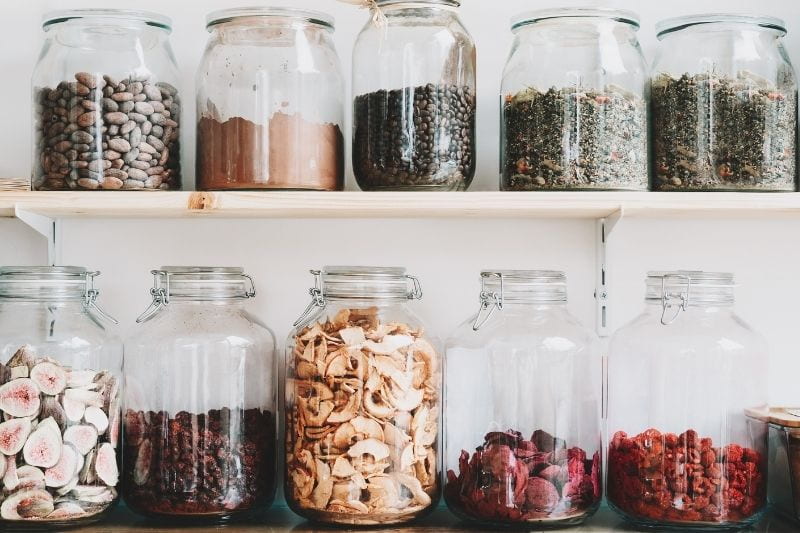
Dehydrated fruits keep in glass jars for 1 to 2 months
What are properties of honeyberries?
Honeyberries, like many red fruits, are thought to be rich in vitamins C and B, and also in antioxidants. They are also a source of fibre.
To learn more
- Discover or rediscover all our honeyberry varieties.
- For everything you need to know, read our article on blue honeysuckle, honeyberry: planting, growing and care






























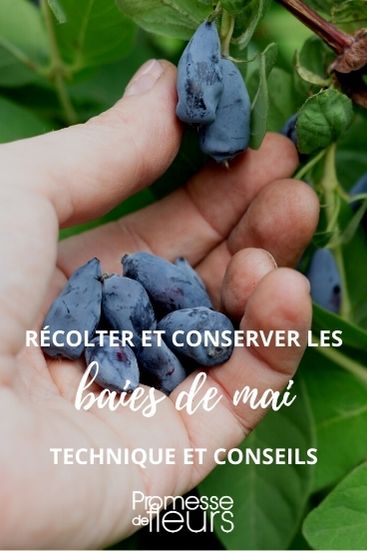
Comments